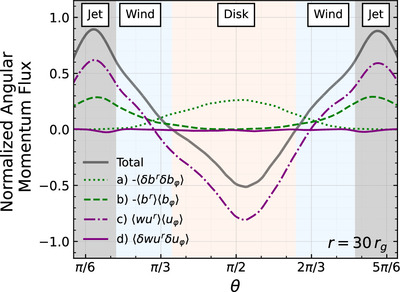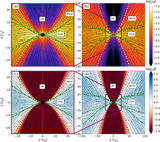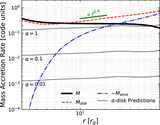Image Details

Caption: Figure 3.
The relative importance of each angular momentum transport mechanism strongly depends on the latitude. We depict the polar angular dependence of the decomposed time-averaged angular momentum flux at r = 30r g , normalized to the average angular momentum flux at r = 2r g (Equation (10)). We break down the total radially outward angular momentum flux (﹩{T}_{\varphi }^{r}﹩, shown with the solid gray line, Equation (1)) into four components: (a) turbulent Maxwell stresses (−〈δ b r δ b φ 〉; Equation (7)), (b) large-scale laminar Maxwell stresses (−〈b r 〉〈b φ 〉; Equation (8)), (c) advective transport (〈wu r 〉〈u φ 〉; Equation (6)), and (d) turbulent Reynolds stresses (〈δ wu r δ u φ 〉; Equation (5)). The turbulent Maxwell stresses are the dominant mode of outward angular momentum transport within the disk, while the large-scale Maxwell and advective terms dominate in the winds.
Copyright and Terms & Conditions
© 2024. The Author(s). Published by the American Astronomical Society.








